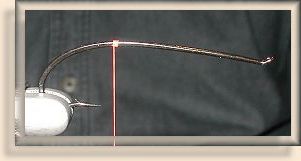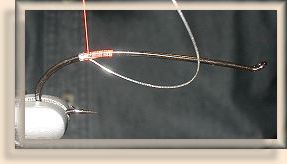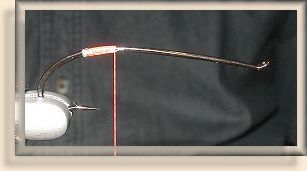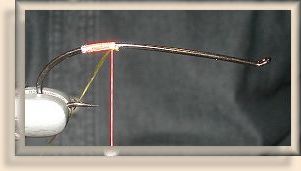
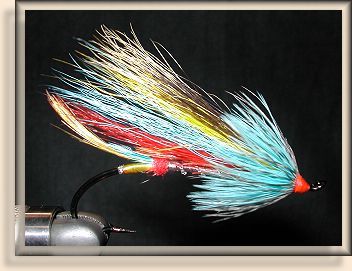 |
|
Silver Doctor
|
|
 6. Match one or two golden pheasant crests, dampen (in mouth) and set on top.
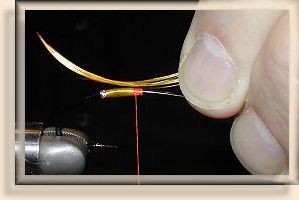 7. Use a loose wrap to position, then, under moderate tension secure, overwrap.
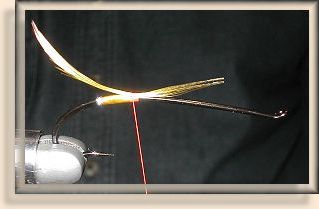 8. Match two imitation blue Kingfisher feathers and lay on top of the golden pheasant crests, wet as above, follow the curvature of the golden pheasant crests.
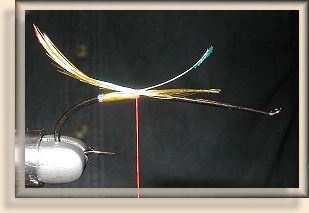 9. Tie down and trim both the golden pheasant crests and Kingfisher.
|
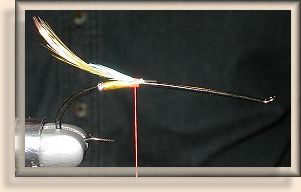 10. Pick a very small amount of red seal fur for dubbing, apply to tying thread. Length of the dubbing on the thread is about one inch.
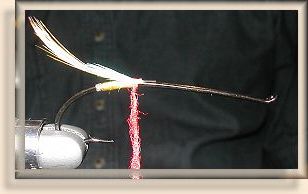 11. Tie in as shown, about three turns.
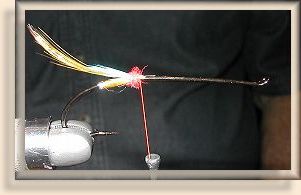 12. Tie in medium oval silver tinsel or ribbing, bind to the side of the hook, wrap thread neatly forward.
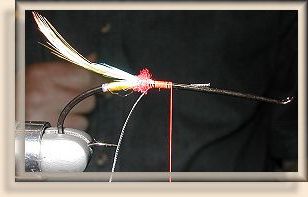
|
|
13. Continue to wrap the thread neatly to the head.
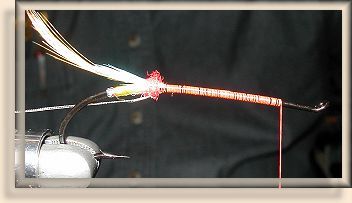 14. Tie in flat tinsel for body and wrap smoothly to the back. Tie in with the unwanted side up as the correct side will then be up, (as with gold/silver flat tinsel.)
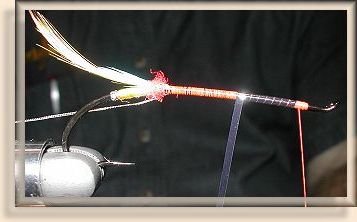 15. Continue wrapping the tinsel back forward.
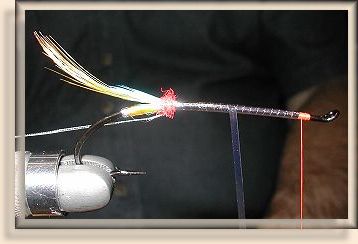 16. Tie off tinsel and trim.
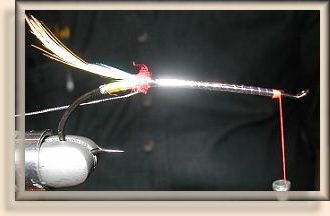
|
|
17. Wrap oval ribbing (tied in at Step 12) forward evenly over the flat tinsel body.
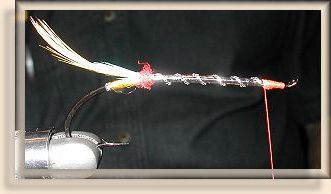 18. (Optional), clip and fold a golden pheasant tippet for an underwing.
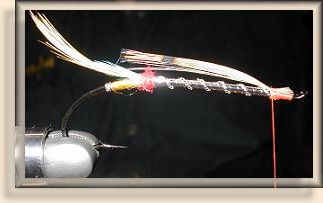 19. Tie in the first of four layers of wing, the red. Use the finest available hair, each layer of wing is about the length of the hook.
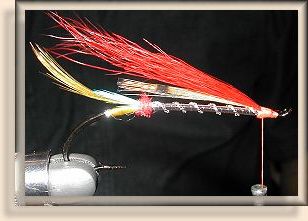 20. Tie in the second layer of the wing, the blue.
 21. Then the yellow.
|
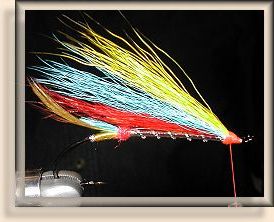 22. Finally the last layer of the wing, fox squirrel, fine bucktail, or Norwegian Goat as shown here. Even shape of head with thread wraps.
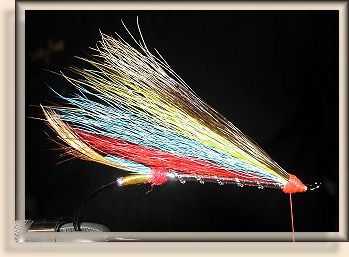 23. Tie in two Silver Doctor blue hen or soft rooster feathers to form a hackle collar, both tied as one.
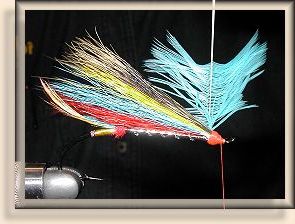 24. Fold blue hackle in half, take two turns to form collar. Tie off and trim.
 25. (Optional), tie in Brahma hen or saddle hackle as veiling. (Brahma hen feather used here.) Whip finish and cement.
|

About Dick Talleur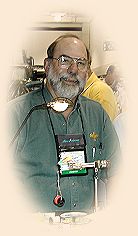 Dick is a delightful gentleman, and agreed to tie this fly for us at the 2001
Fly Tackle Dealer Show at Salt Lake. He was tying in the Folstaf
booth. Dick has written 10 books on fly tying and fly fishing (none of which
has been out of print) is a columnist for American Angler
and Fly Tyer, and has produced 14 videos on fly tying.
He teaches fly tying and fishes all over the world. He lives in Manchester,
New Hampshire. Dick will soon release two special books as a very
limited edition, 100 signed and numbered of each, with a matted hand-tied
fly with each book. Visit his website at:
www.dicktalleur.com. Be sure to check the "Uncle Dickie" page, there is
complete illustrated instruction for the Klinkhamer as well as other flies!
Dick is a delightful gentleman, and agreed to tie this fly for us at the 2001
Fly Tackle Dealer Show at Salt Lake. He was tying in the Folstaf
booth. Dick has written 10 books on fly tying and fly fishing (none of which
has been out of print) is a columnist for American Angler
and Fly Tyer, and has produced 14 videos on fly tying.
He teaches fly tying and fishes all over the world. He lives in Manchester,
New Hampshire. Dick will soon release two special books as a very
limited edition, 100 signed and numbered of each, with a matted hand-tied
fly with each book. Visit his website at:
www.dicktalleur.com. Be sure to check the "Uncle Dickie" page, there is
complete illustrated instruction for the Klinkhamer as well as other flies!
|
|
For more great flies, check out:
Beginning Fly Tying,
Intermediate Fly Tying and Advanced
Fly Tying.
|
